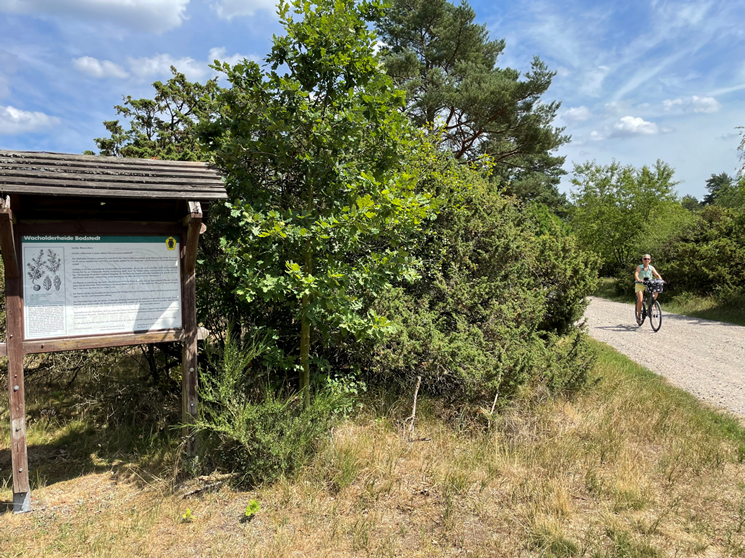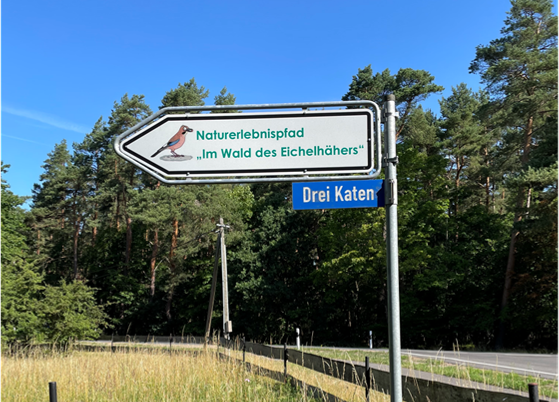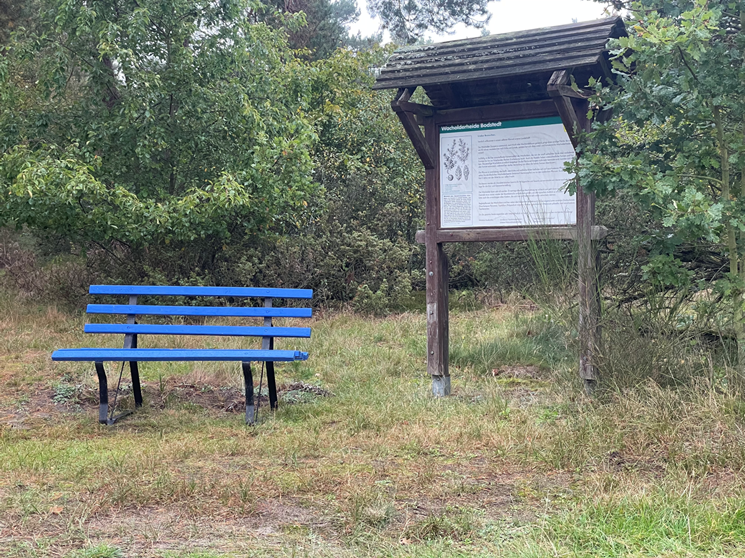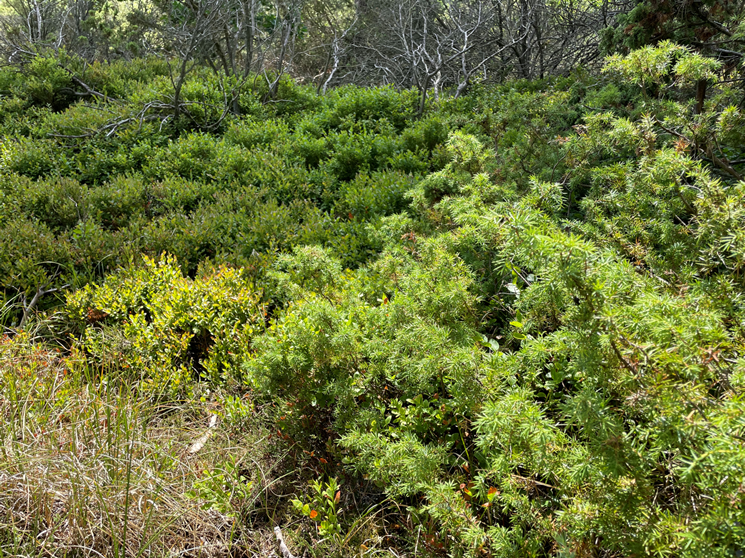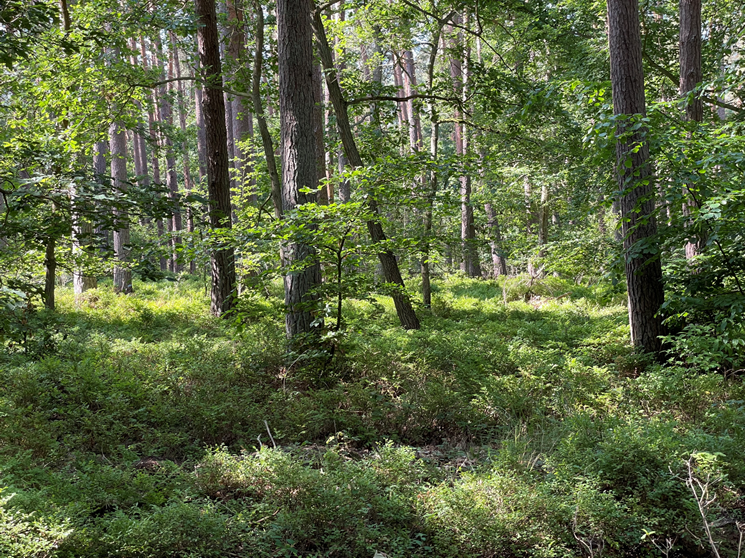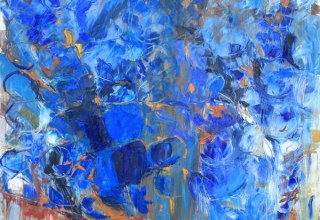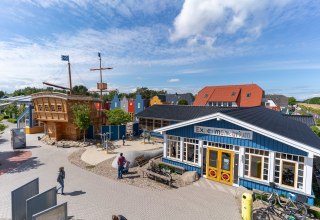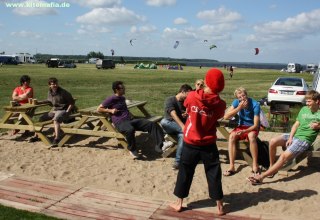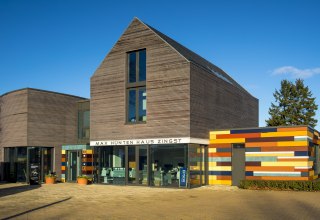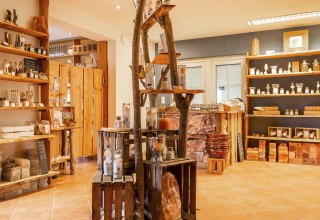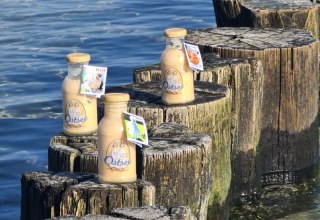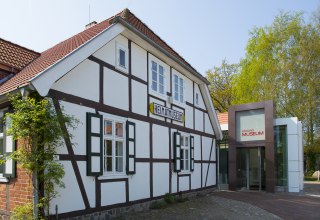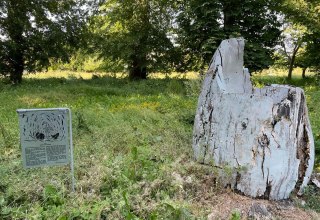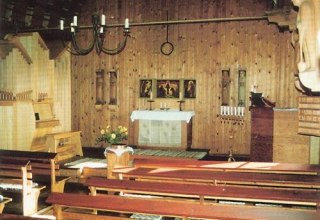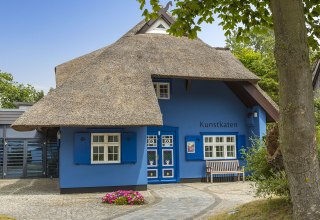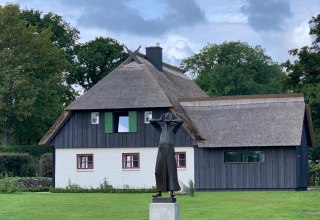In the former Hudewald forest on inland dunes
Welcome to a rare gem of our landscape to the left and right of the "Drei Katen" road!
If you leave Bodstedt on the country road to Barth, turn right after a good kilometer onto the signposted path "Drei Katen" and you will find yourself on an unsealed road in the middle of a mostly wooded inland dune with a richly structured dwarf shrub-juniper heath.
Get off your bike and take your time to look around on the short path to the "Drei Katen" farmsteads: The terrain is conspicuously thin. Along the road is a witches' broom (approx. 2 m in diameter) in an old pine tree. Witches' brooms or thunderbushes are dense spherical or bushy branches in the crowns of pine trees, for example. The witches' broom found here is caused by a rust fungus with intermediate hosts from the clove family (pine canker).
In the former hud forest on inland dunes
The juniper (Juniperus communis), also known as the knirk or machelder tree, characterizes this sandy area. Until around 50 years ago, cows and sheep grazed here in the so-called Hudewald or herding forest. Since then, this juniper heath, rich in species and shapes, has developed.
The variety of juniper shapes to be found here is striking, ranging from tightly upright columns to sprawling forms and creeping flat shapes. The needles also have different shapes and colors. The respective growth form is hereditary. As the area has not been grazed for a long time, all forms have been able to develop here, while the tall forms in particular survive under heavy grazing.
The plants are dioecious, which means that male and female flowers are found on different plants. This is why you will only see the bluish juniper berries (botanically called berry cones) on the female plants. Incidentally, it takes almost 2 years from flowering to ripe fruit. The berries are used as a characteristic spice for game dishes and sauerkraut and also serve as the basis for gin and jenever production.
The juniper can grow very old. However, it does not tolerate shade well and then dies after a while. For this reason, the tree growth must be thinned out again and again to maintain its typical appearance. Please also take note of the old pines, which can develop beautifully here in the open.
In addition to the well-known heather (Calluna vulgaris),the juniper's companion plants here include wire grass (Deschampsia flexuosa), spotted fern (Polypodium vulgare), lesser hawkweed (Hieracium pilosella) and various types of lichen.
As the entire ground vegetation is very sensitive to trampling, please keep to the marked circular route!
Behind the "Drei Katen" farmsteads to the east is a dense blueberry-wirethorn-juniper scrub . The blueberries bloom inconspicuously light green in spring and set berries in May/June, which are ripe and aromatic in July.

